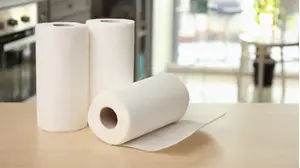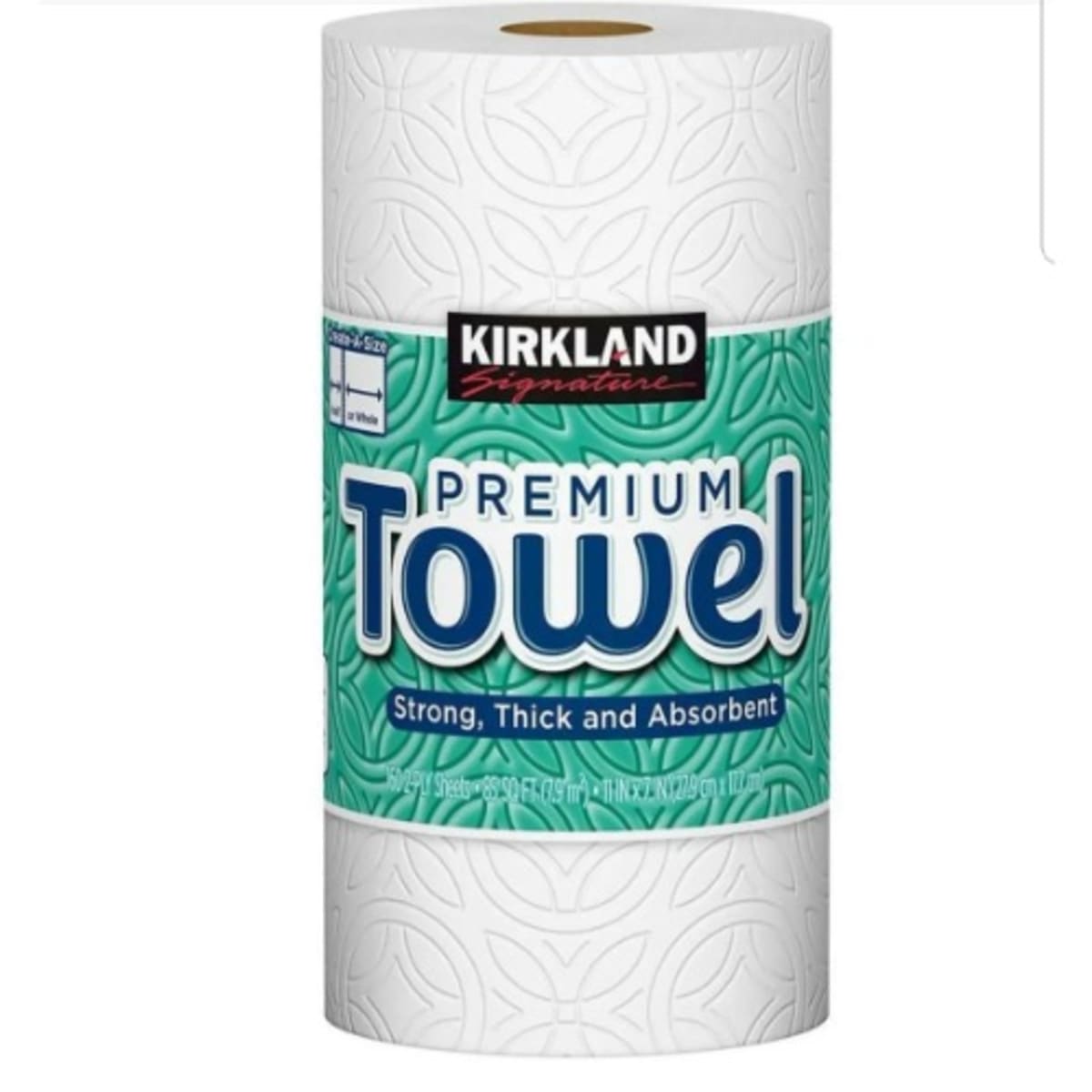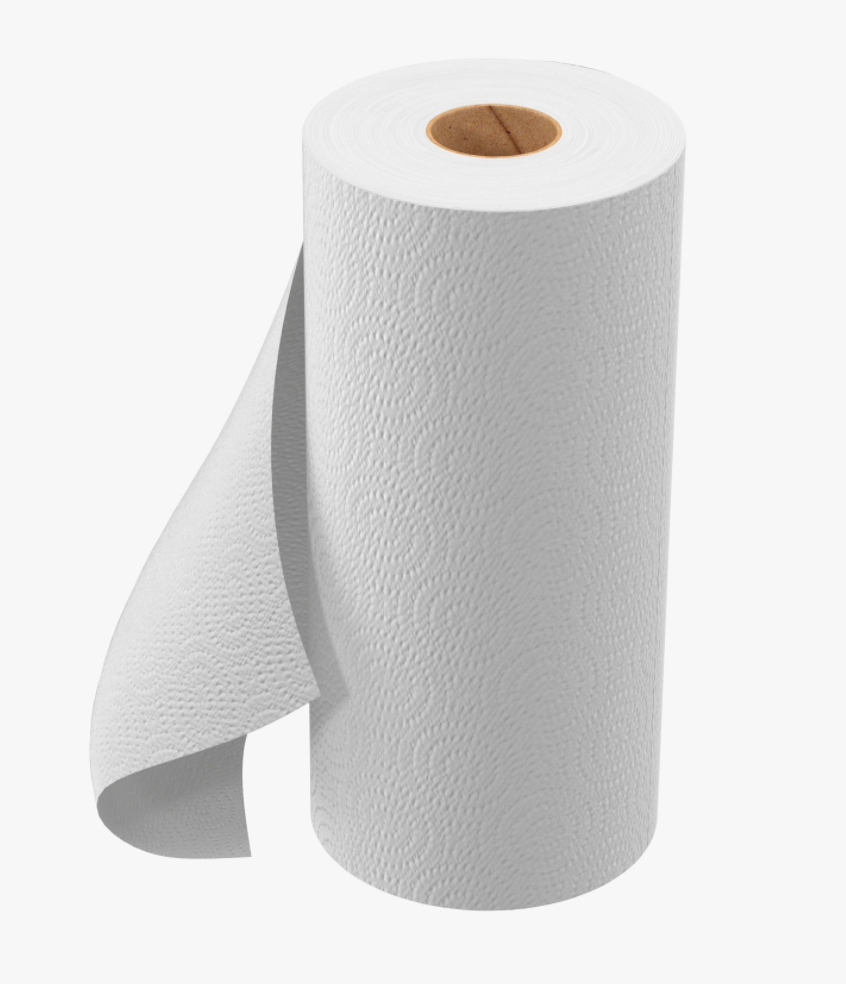The Unsung Hero in Every Household: Unraveling the Wonders of the Paper Towel
Paper towels, a ubiquitous household essential, are absorbent disposable towels crafted from paper pulp. Initially introduced in the early 20th century for public restroom use, these versatile towels quickly found their way into homes, transforming the way we clean and maintain our living spaces. With their diverse applications in cleaning spills, drying hands, wiping surfaces, and more, paper towels have evolved into various types, each tailored for specific tasks. However, while offering convenience, their mass consumption raises concerns about environmental impact. Efforts towards sustainability include eco-friendly options and encouraging mindful usage to reduce waste. Despite these concerns, the paper towel remains an indispensable aid in modern-day living, showcasing its absorbency, convenience, and adaptability across various facets of daily life.
The Evolution of Paper Towels.

In the realm of household essentials, the paper towel stands as an unassuming yet indispensable champion. This everyday item, often overlooked in its ubiquity, plays a multifaceted role in our lives, serving as a reliable aide in cleaning spills, wiping surfaces, and even as a makeshift napkin or plate. The history of the paper towel is woven into the fabric of human ingenuity and necessity. This article delves into the origin, evolution, and the myriad applications of the paper towel, uncovering the surprising versatility and impact of this unassuming household staple.
The Genesis of the Paper Towel
The journey of the paper towel dates back to the early 20th century. In 1907, Arthur Scott, the head of Scott Paper Company, introduced the first paper towel. It wasn’t the neat and perforated rolls we're familiar with today; instead, it was a stack of individual paper sheets originally intended for use in public restrooms. These disposable sheets were initially considered a more hygienic alternative to the common cloth towels used at the time, as they reduced the risk of spreading germs.
However, it wasn’t until the 1930s that the paper towel started gaining traction for household use. Scott Paper Company introduced the first paper towel rolls in 1931. This innovative format allowed for easier dispensing and storage, capturing the attention of homemakers and revolutionizing the way we handle spills and cleanups in our homes.
The Evolution of Paper Towels
The evolution of paper towels has been marked by technological advancements in manufacturing processes. Today, paper towels are not just limited to their original purpose of cleaning; they have diversified into various types, each tailored for specific applications. There are standard paper towels for general use, extra-absorbent varieties for tougher tasks, eco-friendly options made from recycled materials, and those infused with disinfectants for added hygiene.
The absorbency of paper towels is due to the capillary action created by the cellulose fibers within the paper. The manufacturing process involves pulping wood, where the fibers are intertwined, forming a web that gives the paper towel its strength and absorbency.
Versatility and Applications
Beyond the kitchen and bathroom, paper towels have found their way into an array of applications. In the kitchen, they serve as a quick solution for blotting excess oil from fried foods, cleaning up spills, and as a disposable surface for defrosting meat or draining fried foods.
Moreover, paper towels play a crucial role in artistic endeavors. Artists use them for various techniques in watercolor and acrylic painting due to their absorbency and texture. The fibers in certain types of paper towels give a unique effect when used for painting or crafting.
In gardening, paper towels have their utility too. They can be used for germinating seeds, creating seed tape, or as a medium for delicate plant transplants due to their biodegradability and moisture retention.
/product/08/1108732/1.jpg?4420)
Environmental Impact and Sustainability
While paper towels offer convenience, concerns regarding their environmental impact and sustainability persist. The mass consumption of paper towels contributes to deforestation, and their disposability raises questions about waste management and recycling.
To address these concerns, many companies have introduced eco-friendly paper towels made from recycled materials or sustainable sources. Additionally, consumers are encouraged to use paper towels mindfully, opting for reusable cloths or limiting excessive usage to reduce their ecological footprint.
Benefits of Paper Towels
Paper towels offer several benefits that contribute to their widespread use in households, businesses, and various industries. Some of the key advantages include:
- Absorbency: Paper towels are highly absorbent, capable of soaking up spills and messes quickly. Their ability to hold liquids effectively makes them invaluable for cleaning and drying surfaces in kitchens, bathrooms, and other areas.
- Convenience: These disposable towels offer convenience in cleaning. They are readily available in various formats, such as rolls or folded sheets, and are easy to use and dispose of after use. Their disposability eliminates the need for washing and maintaining reusable cloths.
- Hygiene: Disposable paper towels contribute to maintaining hygiene by reducing the spread of germs. Unlike reusable towels that might harbor bacteria if not properly washed and dried, paper towels offer a fresh, clean surface every time they are used.
- Versatility: Paper towels have a wide range of applications beyond cleaning. They are used for tasks like drying hands, absorbing excess oil from fried foods, and as disposable surfaces for food preparation.
- Specialized Varieties: The market offers specialized paper towels designed for specific purposes, such as extra-absorbent towels for tougher cleaning tasks, eco-friendly options made from recycled materials, and those infused with disinfectants for added hygiene.
- Artistic and Craft Uses: Artists often use paper towels for various artistic techniques in painting due to their absorbent nature. The texture and fibers of certain types of paper towels contribute to unique effects in art and craft projects.
- Gardening and DIY Projects: Paper towels are utilized in gardening for tasks like germinating seeds, creating seed tape, and as a medium for delicate plant transplants due to their biodegradability and moisture retention.
Uses of Paper Towels
Paper towels serve a multitude of uses in various settings due to their absorbent and disposable nature. Some of the common and innovative applications include:
- Cleaning Surfaces: The primary and most prevalent use of paper towels is for cleaning and wiping surfaces. Whether in the kitchen, bathroom, or other areas, they efficiently absorb spills and help maintain cleanliness.
- Drying Hands: Paper towels are commonly found in restrooms and kitchens for drying hands after washing. Their absorbency makes them effective for this purpose.
- Absorbing Spills: Due to their quick absorption capabilities, paper towels are ideal for cleaning up spills of liquids, such as water, juice, or oil, on countertops, floors, and other surfaces.
- Cooking Aid: In the kitchen, paper towels serve various purposes. They can be used to blot excess oil from fried foods, cover food in the microwave to prevent splatters, or line plates to absorb excess moisture from food items.
- Disposable Napkins: Paper towels often double as disposable napkins during meals, barbecues, or other occasions, offering a convenient way to clean hands and mouths.
- Art and Craft: Artists use paper towels for various techniques in painting due to their absorbent nature. They can create unique textures and blending effects in watercolor and acrylic painting.
- Gardening: Paper towels find utility in gardening for tasks such as germinating seeds, creating seed tape by sandwiching seeds between damp towels, and as a medium for delicate plant transplants due to their ability to retain moisture.
- Cleaning and Polishing Glass and Mirrors: The lint-free nature of certain paper towels makes them suitable for cleaning glass surfaces without leaving streaks or residue.
- DIY Cleaning Projects: They're useful for DIY cleaning solutions, including acting as a filter when straining liquids or as an aid in applying cleaning solutions to specific areas.
- Emergency Bandage: In emergencies, when no bandages are available, a clean paper towel can be used as a temporary solution to stop bleeding or cover a small wound.

Advantages of Paper Towels
- Absorbency: One of their key advantages is their high absorbency. They can quickly soak up spills, making cleaning and drying tasks more efficient.
- Convenience: Paper towels are convenient to use and dispose of. They are readily available in various formats, such as rolls or folded sheets, and eliminate the need for washing or maintaining reusable cloths.
- Hygiene: Disposable paper towels contribute to maintaining hygiene by providing a fresh, clean surface with each use, reducing the risk of bacterial contamination compared to reusable towels.
- Versatility: They have a wide range of applications, from cleaning surfaces to drying hands, absorbing excess oil from food, and even serving as disposable napkins during meals.
- Specialized Varieties: There are specialized types for specific purposes. Extra-absorbent towels are available for tougher cleaning tasks, while eco-friendly options made from recycled materials cater to environmentally conscious consumers.
Disadvantages of Paper Towels
- Environmental Impact: One of the major drawbacks is their environmental impact. The mass consumption of paper towels contributes to deforestation and generates significant waste.
- Non-Reusable: Unlike cloth towels, paper towels are single-use items. This disposability creates excessive waste, which adds to environmental concerns.
- Cost: Over time, the cost of repeatedly buying paper towels can accumulate, especially for households or businesses with high usage.
- Manufacturing Impact: The production of paper towels requires the use of resources like water, energy, and chemicals, impacting the environment throughout the manufacturing process.
- Challenges in Recycling: Despite being paper-based, certain paper towels are not easily recyclable due to contamination from food or cleaning products, adding to landfill waste.
Environmental Impact on Paper Towels
The environmental impact of paper towels stems from various stages of their lifecycle, from production to disposal. While these household items offer convenience and practicality, their use contributes to several environmental concerns:
- Resource Consumption: The production of paper towels requires a significant amount of natural resources, primarily wood pulp sourced from trees. This leads to deforestation and habitat loss, impacting biodiversity and ecosystem stability.
- Energy and Water Usage: The manufacturing process of paper towels involves considerable energy consumption and water usage. The pulping, pressing, drying, and cutting of the paper all demand substantial energy and water resources.
- Chemical Usage: Chemicals such as bleaches, dyes, and other additives are often used in the production process. The disposal of these chemicals can lead to water and air pollution, affecting ecosystems and potentially impacting human health.
- Waste Generation: As single-use items, paper towels contribute significantly to waste accumulation. Their disposability results in increased landfill waste, especially when not disposed of or recycled properly.
- Recyclability and Contamination: Unlike typical office or printing paper, paper towels can be contaminated with food residues or cleaning agents, making them less suitable for recycling. This contamination poses challenges in reusing or recycling these materials effectively.
- Carbon Footprint: The transportation of raw materials to manufacturing facilities and the subsequent distribution of paper towels add to the product's overall carbon footprint. This contributes to greenhouse gas emissions and climate change.
Efforts to mitigate the environmental impact of paper towels include:
- Recycled Content: Using paper towels made from recycled materials reduces the demand for virgin pulp and lessens the impact on forests.
- Eco-friendly Alternatives: Opting for eco-friendly paper towels made from sustainable sources or those that carry eco-certifications can reduce the environmental impact.
- Mindful Usage: Encouraging conscious consumption and reducing unnecessary waste by limiting the use of paper towels and considering reusable alternatives like cloth towels or biodegradable substitutes.
- Proper Disposal: Ensuring proper disposal by segregating and recycling paper towels when possible, although contaminated towels might not be suitable for recycling.

Frequently Asked Questions (FAQ)
What is paper towel used for?
Paper towels serve various purposes due to their absorbent and disposable nature. Some common uses of paper towels include:
- Cleaning Surfaces: They are primarily used for cleaning and wiping surfaces in kitchens, bathrooms, and other areas. Their absorbent nature makes them efficient in soaking up spills and maintaining cleanliness.
- Drying Hands: Often found in restrooms and kitchens, they are used for drying hands after washing due to their quick absorbency.
- Absorbing Spills: Paper towels are ideal for quickly absorbing spills of liquids, such as water, juice, or oil, on countertops, floors, or other surfaces.
- Cooking Aid: In the kitchen, paper towels serve various purposes. They can be used to blot excess oil from fried foods, cover food in the microwave to prevent splatters, or line plates to absorb excess moisture from food items.
- Disposable Napkins: During meals, barbecues, or other occasions, paper towels can function as disposable napkins, providing a convenient way to clean hands and mouths.
Is paper towel and tissue paper same?
Paper towels and tissue papers serve different purposes and are designed with varying characteristics, although they're both made from paper pulp.
Paper Towels:
Paper towels are typically thicker, more absorbent, and stronger compared to tissue paper. They are designed for cleaning and drying tasks, with a primary focus on absorbency. Paper towels are often used in the kitchen and other areas for tasks such as wiping spills, cleaning surfaces, and drying hands. They come in various forms, including rolls, folded sheets, or as single sheets, and are generally larger in size compared to tissue paper.
Tissue Paper:
Tissue paper, on the other hand, is much thinner and softer. It's commonly used for facial tissues, toilet paper, or in gift wrapping. Tissue paper's primary purpose is softness and comfort, especially for use on the skin. Facial tissues are used for blowing noses or for general personal hygiene, while toilet paper is specifically designed for personal hygiene after using the restroom. Gift-wrapping tissue paper is delicate and is used for decorative purposes.
The key difference lies in their intended use and the properties they possess. Paper towels emphasize absorbency and strength for cleaning, while tissue paper focuses on softness and comfort for personal hygiene or delicate purposes.

What are the different types of paper towels?
Paper towels come in various types, each tailored for specific purposes and offering different features. Some common types of paper towels include:
- Standard Paper Towels: These are the everyday, general-purpose paper towels. They are suitable for common cleaning tasks, spills, and drying surfaces. They offer a balance between absorbency and strength.
- Select-A-Size Paper Towels: This type of paper towel comes with perforations that allow you to select smaller or larger sheet sizes based on your needs. They provide flexibility and minimize waste by letting you tear off the desired size for the task at hand.
- Multi-Ply Paper Towels: Multi-ply towels are composed of multiple layers of paper. These extra layers contribute to increased absorbency and strength, making them suitable for more challenging cleaning tasks.
- Strong and Absorbent Paper Towels: These are designed for heavy-duty or more demanding cleaning tasks. They are engineered to be extra strong and highly absorbent, ideal for tackling messes that require more durability.
- Eco-Friendly Paper Towels: Environmentally conscious options made from recycled materials or sustainable sources fall into this category. They aim to reduce the environmental impact of paper towel production and disposal.
- Bleach-Free Paper Towels: Some paper towels are made without the use of chlorine bleach, making them more eco-friendly and suitable for those sensitive to chemical residues.
- Textured or Embossed Paper Towels: These towels have textured surfaces or are embossed, which helps to increase their absorbency and effectiveness in cleaning tasks. The texture can aid in scrubbing or wiping.
- Paper Towel Rolls: These are the most common format of paper towels, available in different sheet sizes and lengths. They are convenient for dispensing and come in various package sizes to suit different household or commercial needs.
- Household and Commercial Grade Paper Towels: Some paper towels are specifically designed for household use, while others are intended for more heavy-duty use in commercial or industrial settings.
- Disinfectant or Antibacterial Paper Towels: Infused with disinfectants or antibacterial agents, these paper towels aim to offer an added layer of cleanliness and hygiene during cleaning tasks.
What is roll towel?
A roll towel, often referred to as a paper towel roll, is a common format of paper towels designed for various cleaning and drying tasks. It consists of a long continuous sheet of paper wound around a cardboard core, typically held within a dispenser or placed on a holder for easy access and use.
The roll towel format provides several advantages:
- Convenience: The rolls are convenient for dispensing, allowing users to tear off the desired sheet length based on the specific cleaning task, whether it's a small spill or a larger surface.
- Space-Saving: They are space-efficient and easy to store, as the rolls are typically compact and take up less space compared to bulkier packs of folded paper towels.
- Customizable Length: Roll towels often come with perforations at regular intervals, allowing users to tear off the towel at the desired length. Some rolls also have a "Select-A-Size" feature, providing the flexibility to tear off smaller or larger sheets as needed.
- Versatility: They come in various sizes, ply thickness, and levels of absorbency, catering to different cleaning needs, from everyday spills to more heavy-duty tasks.
The paper towel, a seemingly humble household item, has carved an irreplaceable niche in our daily lives. Its journey from a single-use restroom accessory to an all-encompassing cleaning, crafting, and cooking companion mirrors our ongoing quest for convenience and efficiency.
As we embrace the innovation and versatility of the paper towel, it’s crucial to balance its utility with environmental responsibility. By opting for sustainable alternatives, limiting excessive use, and exploring creative reuses, we can ensure that the paper towel remains an invaluable asset while mitigating its ecological impact.
This unassuming hero of our household is a testament to human inventiveness and adaptability, a small square of cellulose that continues to weave its way into our daily routines, offering convenience and utility with every tear.



